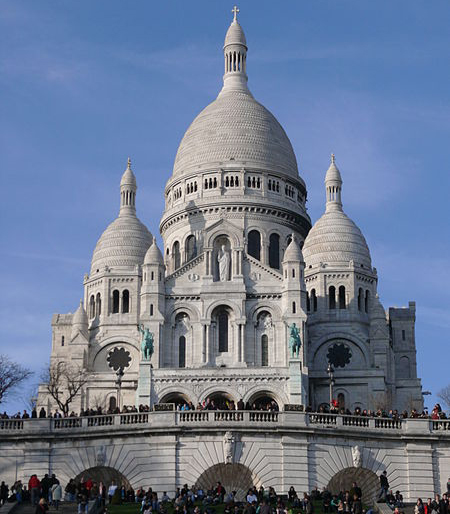
03 Nov Montmartre
Montmartre is its own place in a city as special as Paris. It is quite distinct from the rest of Paris though it is the 18th arondissement. There are artistes everywhere as one goes up the hill one is immediately aware that one has alighted upon a unique Bohemian place – the toy train that chugs near the metro stop, the funiculars that takes one up in a jiffy, the cheap but good paintings that can be bought on the spot, the café that can be savoured everywhere en route to the top as one witnesses the on-going theatre of life. As evening shadows lengthen there is the still of the day before the night life full of promise. This is the area of Moulin Rouge and the Can-Can. Girls kicking up their shapely legs may no longer be shocking but it is evocative of Toulouse-Lautrec, a bygone era and so many nameless things.
The Sacre Coeur basilica on top of the highest point in or around the city gives great views of the city below. Montmartre as an area is full of joie de vivre even though in contrast the monument does not exude joy but conveys gravitas. Inside it is even more like that. I therefore prefer to stay outside and savour the flavour of the area as well as the panoramic views.
Montmartre first finds mention in Harp in Chapter 8 when Ashok as much in discovery of himself as of her, is charmed by Nicole from the factory and courts her. It was an exceptional place for an exceptional evening. Every step down was an opportunity for courtship.
There are many ateliers here and it is easy to spend the whole day just visiting them. But if that gets too much for the senses, one I recommend is the Bateau Lavoir where Picasso, Paul Gauguin and Modigliani painted amongst others.
Similarly, there are many museums in the quartier and it’s not only tourists from abroad and elsewhere in France that come to take them in but the gens de quartier also don’t tire of them. If I am to select a few – not in any particular order – I would go back to the Musee de la vie Romantique. Apparently the salon that preceded the museum had the likes of Frederic Chopin, Franz Liszt, George Sand, Ivan Turgenev spending time here.
Montmartre has many little squares waiting to be discovered as one turns the corner. One such is Carre Roland Dorgeles. Peaceful, with trees on the side, a microcosm of Montmartre where many famous painters worked is well worth the wander.
No article on Montmartre would be complete without reference to its bistros and cafes. Some good and some are some more touristy. One of the cosier ones is Le Café qui parle with good service and friendly staff – often an issue in Paris. There is enough variety including vegetarian and their Café Gourmand is something they pride themselves on.



No Comments